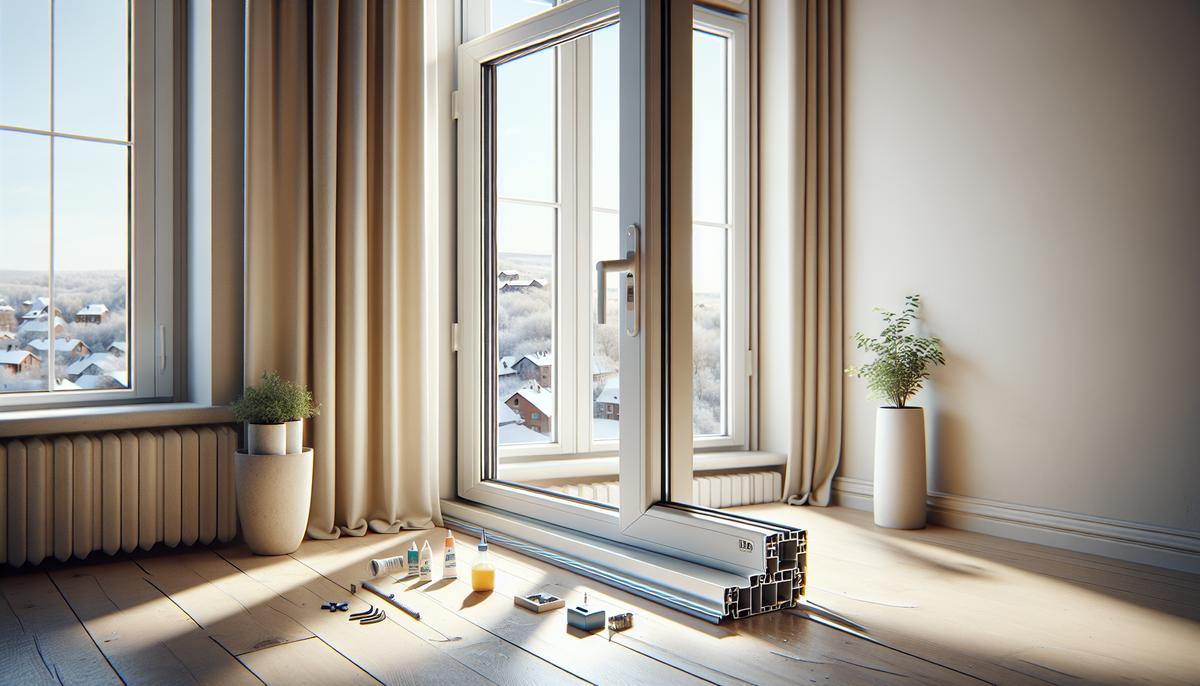WINDOWS

Date added: 16.11.25
Tips for installing Aluplast Ideal 8000 windows in apartments and houses
Summary
- Check and prepare the opening: geometry, load-bearing structure and cleanliness.
- Leave an installation gap (typically 10–20 mm) and support the frame on shims.
- Choose anchors suitable for the wall material (concrete, brick, aerated block).
- Use a three-layer sealing approach: internal vapor barrier, insulating foam, external breathable tape.
- Fit sill and drip cap with correct slope; ensure external waterproofing.
- Test hardware and adjust sash pressure and alignment before handover.
Introduction
Aluplast Ideal 8000 is a modern five-chamber PVC profile offering good thermal and acoustic performance. Correct installation preserves these properties and ensures long-term performance. Below are practical guidelines for installing these windows in apartments and detached houses.
Preparing the opening
- Remove loose plaster and debris; ensure the load-bearing surface is solid.
- Check opening dimensions in three points (top, middle, bottom) and diagonals.
- Use a spirit level and plumb line — deviations should be minimal (3–5 mm across the entire opening where possible).
- Consider façade insulation thickness and finishing layers when measuring installation depth.
Tools and materials
- Levels (160–200 cm), plumb line, tape measure, plastic shims.
- Appropriate anchors (frame anchors or chemical anchors where needed), mounting foam, internal vapor-tight tape and external breathable tape.
- Screwdrivers, washers, window sill, drip cap, sealants compatible with PVC.
Installation gap and alignment
- Typical gap: 10–20 mm. Larger windows require wider gaps for thermal movements and foam.
- Place the frame on shims with spacing about 300–400 mm.
- For heavy or large units increase support and fixing points.
- Choose fixings depending on the substrate: concrete/brick — frame anchors; aerated concrete — chemical anchors or special long dowels.
Fixing the frame
- Start fixing from the top and one vertical side, then the opposite vertical and bottom.
- Do not overtighten anchors; keep the frame square and avoid profile distortion.
- After primary fixing, test sash operation and adjust if necessary.
Insulation and joint sealing
- Install an internal vapor-tight layer to prevent indoor moisture entering the joint.
- Fill the gap with low-expansion or controlled-expansion polyurethane foam to avoid deforming the frame.
- Outside, use breathable tape to allow moisture to escape but prevent water ingress.
- Follow the warm installation principle: internal tight, external breathable.
Sill and drip cap
- Install a drip cap with a 5–10° slope away from the window to drain water.
- Drip cap should extend beyond the facade by 30–40 mm.
- Install the window sill after foam curing; ensure a thermal break if required.
Hardware adjustment and commissioning
- Check all locking positions, tilt-and-turn functions and micro-ventilation.
- Adjust the compression to ensure uniform sealing around the perimeter.
- Inspect drainage holes and clean channels to prevent water accumulation.
Differences for apartments vs houses
- In apartments, consider facade aesthetics, rules from building management, and constraints on external additions.
- In detached houses, pay special attention to integrating the window with external insulation and weatherproofing.
- Balcony doors and large glazing require additional reinforcement and careful load calculations.
Common mistakes to avoid
- Over-foaming without respecting vapor tightness layers.
- Incorrect fixings for the substrate leading to loosening.
- Hard sealing of the exterior joint that blocks moisture diffusion.
FAQ — practical questions
What is the ideal installation gap?
Usually 10–20 mm depending on frame size. Allow more for larger frames. The gap must accommodate insulation materials and thermal movements.
Can installation be done in winter?
Yes, with winter-grade foam and careful protection of external joints from freezing. Ensure that adhesives and tapes are rated for low temperatures.
Which sealant to use outside?
Use an elastic exterior-grade silicone or polyurethane sealant. Combine with breathable tape — avoid rigid mortar for the external joint.
Do I need ventilation with high-insulation windows?
Yes. High airtightness requires controlled ventilation: micro-ventilation in the window, mechanical ventilation system, or periodic airing to control humidity.
How to care for Aluplast Ideal 8000 after installation?
Maintain hardware by periodic lubrication, inspect seals for wear, clean drainage channels and check frame alignment annually.
If you need a printable checklist for installers by wall type (concrete, brick, aerated block) or a handover form template — we can prepare it separately.
DK-Logi blog topics and categories
Useful articles about PVC windows, blinds, and practical advice for your home.

GET A FREE WINDOW COST ESTIMATE!
Leave a request, and we will contact you to arrange a free measurement and provide a full cost estimate.

2025 © All rights reserved



